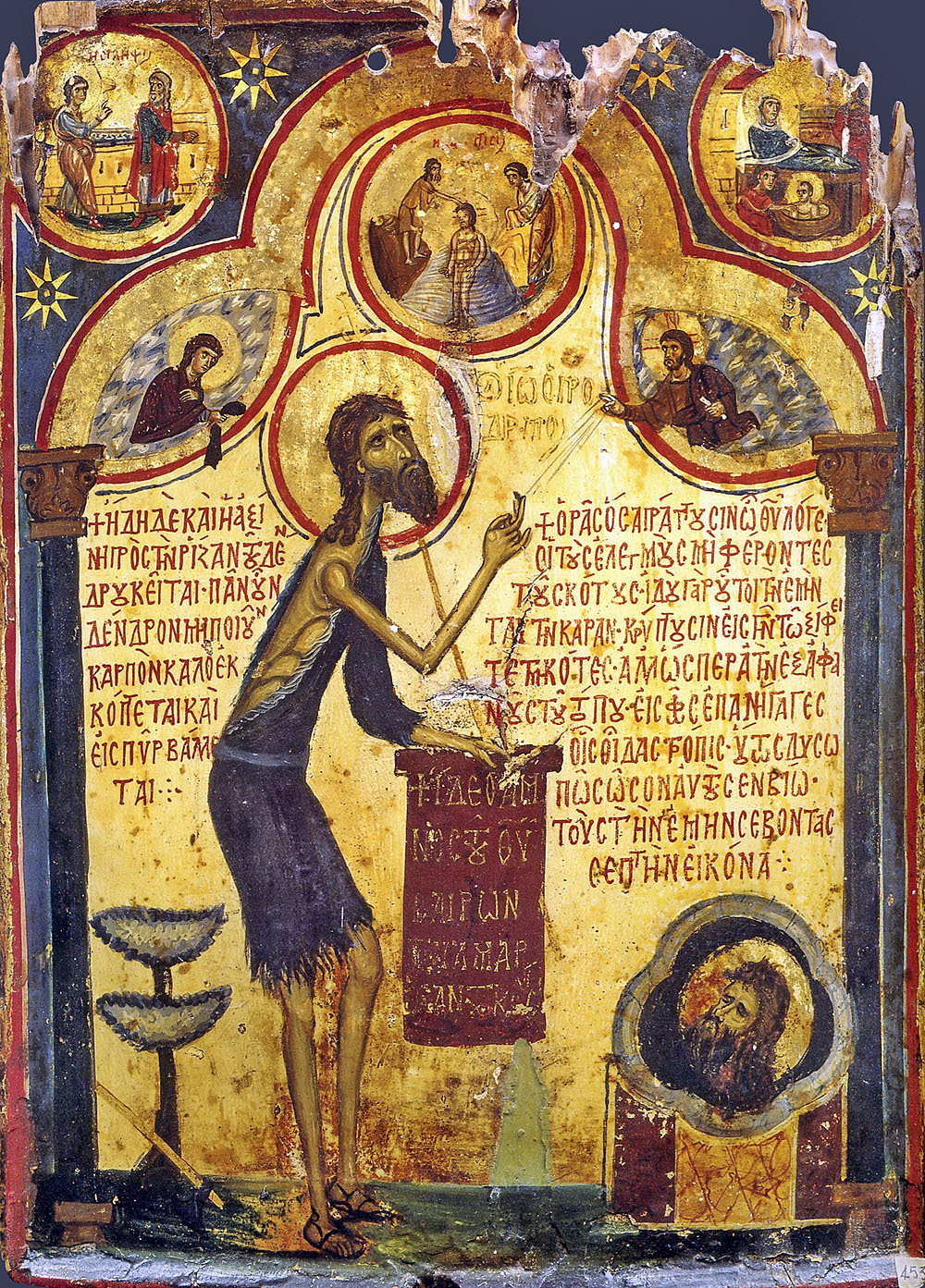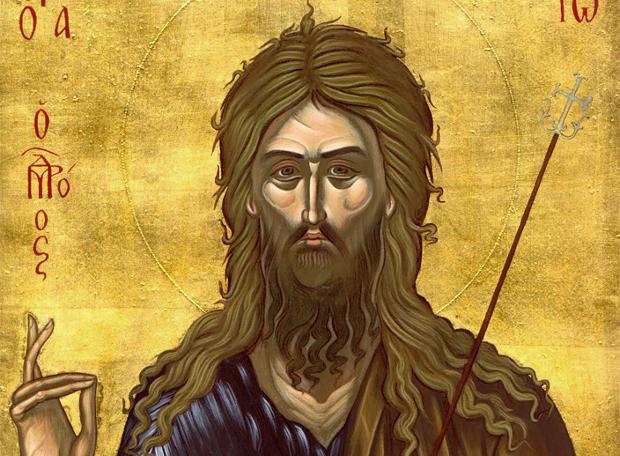Synaxis of the Honourable Forerunner
7 January 2023On 7 January, the Church celebrates the Synaxis of the Honourable Forerunner and Baptist, John. It is the oldest feast of our Church for John the Baptist and it came from God. God enlightened the Fathers of the Church and they appointed the day after Epiphany for us to honour Saint John, the man who baptized Our Lord. He’s the greatest saint of our Church. No-one compares to the Mother of God, of course, but John is “the greatest of those born to woman”. In the flesh, the love of Christ for humankind. The friend of sinners. The preacher of repentance. The desert-loving dove. It matters not in which desert we find ourselves, be it the desert of cities or of other areas, we should be aware that Saint John the Forerunner is always there with us, to keep us company. He’s the best company we could wish for.
This is why Alexandros Papadiamantis, when he was in the noisy city of Athens, among the plutocrats and so on, wanted Saint John the Forerunner of Skiathos more than anyone. Whom he called “Moonless”, which would have been at some point when he saw neither sun nor the moon. And in a wonderful poem, with the same title, he says to him: “From your desert, my Saint John/ where once your voice was heard/ remember us and pity us/ who are wasting away in a wilderness/ full of human population”. How wonderful! This is why we aren’t alone in our holy Church. At first sight, perhaps. But in fact not.
The Incarnate One is with us, so is the Holy Trinity, and, much more so, the Mother of God, Saint John, the Apostles, the saints, the martyrs, the angels and archangels, the spirits and souls of the just. And all those who love us, wherever they are on the earth. This is why we aren’t at all alone. All we have to do is pray and call upon them and we’re in “the effulgence of the saints”. Among the saints. And with the saints.
On the same day, January 7, we also celebrate the translation, that is the transportation, of the honourable hand of Saint John the Forerunner from Antioch to Constantinople, at the time of Konstantinos Porfyroyennitos and his son, Romanos II, also Porfyroyennitos [i.e. born in the purple] in the 10th century. Saint John had been buried in Sevasti, a town in Syria, in Cilicia, Asia Minor, close to Antioch, and the Evangelist Luke went and took the hand of Saint John the Baptist. He took it to his native city of Antioch, which was later home to Saint John Chrysostom and so many others. And there the hand of Saint John worked many great miracles. It unlocked souls and brought them to Christ. It drew them out of sin and gave them repentance and grace. It worked wonders in a variety of ways: casting out demons, healing the sick, raising the paralytics, and, above all, giving spiritual health to the soul.
The Synaxario for 7 January says that on the outskirts of Antioch there lived a fearsome beast, and that the ordinary people there, that is the pagans, those who weren’t Christian, worshipped it. They looked on it as a god. And every year, they offered it sacrifice, the victim being a human person. They cast lots and it was all a matter of chance. One year, however, it happened that they offered the daughter of a Christian to the beast to be eaten. The father was greatly disturbed and didn’t know what to do. So he made a prayer of supplication to God, Christ and Saint John. On the evening before this vile and God-repellent act was to take place, he went and venerated the hand of the saint. And while he was venerating it, he bit or cut off or simply took in his mouth, the thumb, without anyone realizing.
The next day, holding the thumb of the great Baptist in his hand, he took his daughter to the place where the beast lurked and was waiting to eat her. And a good many people had gathered there out of curiosity- what a dreadful spectacle and callous attitude!- and were all waiting for the time when this horror would take place. When the beast came and surged towards its victim, her father ran in front of it and, when it had opened its maw to swallow up the girl, he took aim and threw Saint John’s thumb in. And what happened. The beast burst asunder and disappeared. Everyone was amazed. Particularly the father. And even more so the girl. They were so happy. They praised and glorified Christ, Our God. And His great Forerunner. They celebrated. They shouted for joy. Many pagans became Christian. And all together, but particularly the father, who had received such a benefaction, took stones and built a great church in honour of Saint John the Baptist.
The emperors of Byzantium, particularly Konstantinos and Romanos, who had been born in the purple, had also learned of the miracles, and wanted to have the hand of Saint John in Constantinople. Saint John saw this and was very pleased that he was wanted in the Reigning City. So what did he do? One evening, when the fathers were in the church and blessing water, in the church where his hand was, the saint illumined and urged a deacon, Job, from the Church of Antioch, to go and seize the hand and take it to Constantinople. This was a good theft.
And, indeed, the hand arrived on the very day of his synaxis. January 7. The man had brought it secretly, in case anyone found out and took it away from him. It was a great treasure. “Your hand which touched the most pure head of the Lord…”, as the doxastikon of the Ninth Hour says.
Τhe emperors heard about it and came out. They went out to receive the great Baptist. They fell to the earth, weeping. All the people wept. It was a great outpouring of joy and gratitude and welcome for Saint John, the greatest of the prophets. They took him in their hands, the emperors. And where did they take him? To the palace. To the palace church. And there “We thank you, Saint John, who heard and saw our desire and hearkened to our supplication and came to us of your own accord, in this way”. And as long as there were emperors in the immortal city of Constantinople, they celebrated the translation, that is the transportation of Saint John’s hand. And it’s in the Minaio [book of feasts for each month] and we also celebrate it. How wonderful it is! How beautiful! Many years to all who are celebrating.
Archimandrite Ananias Koustenis, Χειμερινό Συναξάρι, vol. I, pp. 134-40.








